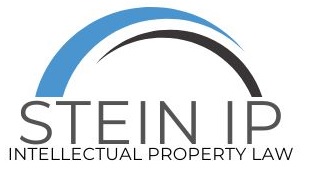- HOME
- > Blog Main Page
- > Patents
- > US Patent Law – On-Sale Bar–What is it?
US Patent Law – On-Sale Bar–What is it?
By Skyelar Reel

An inventor may obtain a patent protection for their new product by applying through the United States Patent and Trademark Office. Patents are meant to guarantee an inventor the negative right to exclude others and protect their product or method. Certain cases may inhibit an inventor from receiving a patent such as violating the on-sale bar. The on-sale bar statute 35 U.S.C. § 102 (b) in the Patent Act, a statute that governs patent law in the United States, establishes the limitations an inventor may encounter when attempting to obtain a patent.
The on-sale bar prevents an inventor from obtaining a patent if their product has been made available to the public prior to the “effective filing date of the ‘claimed’ invention” (Farkas). Thus, if the product has been “on sale” before the date that the patent is filed, the inventor may not receive patent protection.
Specifically, section 102 (b) of the Patent Act prohibits the acquisition of a patent if a product had been available to the public in the United States for “more than one year” before “the date of the application for patent” (Farkas). In this way, an inventor could not receive a patent if their product had been made available to the public any time before the filing date for a patent.
Prior to the AIA, courts established that the “bar” on patent protection would not be applicable unless the invention was “the subject of a commercial contract for sale” (Farkas). This meant that an inventor could not receive patent protection if their product had been used in a commercial sale available to the general public “such as selling the product in a store” (Farkas).
Thus, with the additional amendment in 2011, any type of manufacturing of a product prior to the filing date for patent protection may prohibit an inventor from applying for a patent at all. The addition of the AIA to the on-sale bar statute incentivizes inventors to apply for a patent as early as possible to avoid possible imitations of the product on the market.
However, the AIA resulted in conflicts over interpretation of the original statute, specifically the topic of private sales. In 2018, the United States Supreme Court established with Helsinn Healthcare S.A. v. Teva Pharmaceuticals USA, Inc. that a private sale of a product prior to the filing date of a patent violates the on-sale bar (Helsinn Healthcare S.A. v. Teva Pharmaceuticals USA, Inc.).
The additional amendment in 2011 led inventors to assume that “secret sales” were eliminated from the “on-sale bar” because they mistakenly concluded that the AIA overrides the statute (Shelton). However, according to the United States Supreme Court, the amendment does not change any aspect or conditions of the “on-sale bar.”
The Supreme Court has clearly eradicated that the AIA does not change the original rules, setting a precedent that prevents future inventors from misinterpreting 35 U.S.C. § 102 (b) in the Patent Act.
References:
Farkas, Brian. “How the On-Sale Bar Could Prevent You From Obtaining a Patent.” Www.nolo.com, Nolo, 28 June 2019, www.nolo.com/legal-encyclopedia/how-the-on-sale-bar-could-prevent-you-from-obtaining-a-patent.html.
Shelton, Daniel R., and Courtenay C. Brinckerhoff. “Supreme Court Finds The On Sale Bar Is The Same As It Ever Was: Blogs: PharmaPatents: Foley & Lardner LLP.” Blogs | PharmaPatents | Foley & Lardner LLP, 28 Jan. 2019, www.foley.com/en/insights/publications/2019/01/supreme-court-finds-the-on-sale-bar-is-the-same-as.
Text...

TAGS:
RECENT POSTS
